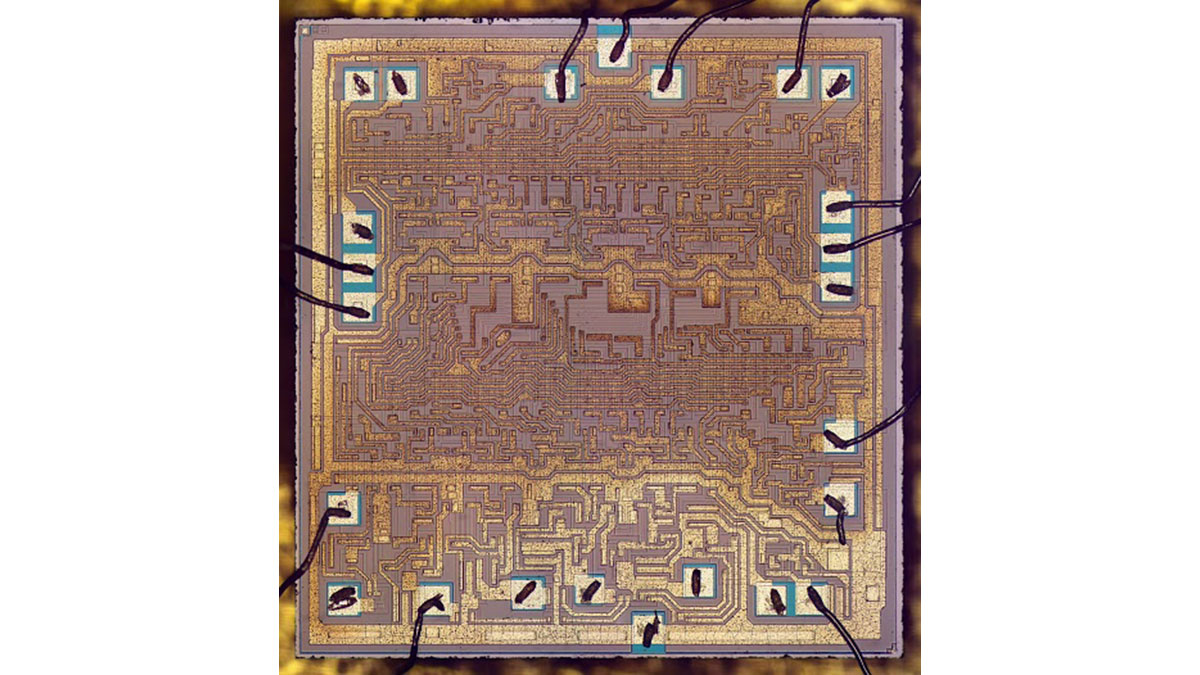Summary of Inside the vintage 74181 ALU chip
The 74181 ALU chip, introduced by Texas Instruments in 1970, was a pivotal component in 1970s minicomputers, offering fast 4-bit arithmetic and logic operations on a single TTL chip. It supports 32 functions—16 logic and 16 arithmetic—including standard and some unusual functions like "A plus (A and not B)." Its complex gate structure integrates carry lookahead for speed, explaining its non-standard design. The chip contributed significantly to compact and efficient CPU designs in machines like the PDP-11 and VAX-11/780 and remains popular among retro computing enthusiasts.
Parts used in the 74181 ALU chip project:
- 74181 Arithmetic Logic Unit (ALU) chip
- TTL logic gates (various types inside the chip)
- Carry lookahead circuitry (integrated within the 74181)
The 74181 ALU (arithmetic/logic unit) chip powered many of the minicomputers of the 1970s: it provided fast 4-bit arithmetic and logic functions, and could be combined to handle larger words, making it a key part of many CPUs. But if you look at the chip more closely, there are a few mysteries. It implements addition, subtraction, and the Boolean functions you’d expect, but why does it provide several bizarre functions such as “A plus (A and not B)”? And if you look at the circuit diagram (below), why does it look like a random pile of gates rather than being built from standard full adder circuits. In this article, I explain that the 74181’s set of functions isn’t arbitrary but has a logical explanation. And I show how the 74181 implements carry lookahead for high speed, resulting in its complex gate structure.

The 74181 chip is important because of its key role in minicomputer history. Before the microprocessor era, minicomputers built their processors from boards of individual chips. A key part of the processor was the arithmetic/logic unit (ALU), which performed arithmetic operations (addition, subtraction) and logical operations (AND, OR, XOR). Early minicomputers built ALUs out of a large number of simple gates. But in March 1970, Texas Instruments introduced the 74181 Arithmetic / Logic Unit (ALU) chip, which put a full 4-bit ALU on one fast TTL chip. This chip provided 32 arithmetic and logic functions, as well as carry lookahead for high performance. Using the 74181 chip simplified the design of a minicomputer processor and made it more compact, so it was used in many minicomputers. Computers using the 74181 ranged from the popular PDP-11 and Xerox Alto minicomputers to the powerful VAX-11/780 “superminicomputer“. The 74181 is still used today in retro hacker projects.1
The 74181 implements a 4-bit ALU providing 16 logic functions and 16 arithmetic functions, as the datasheet (below) shows. As well as the expected addition, subtraction, and Boolean operations, there are some bizarre functions such as “(A + B) PLUS AB“.
Read more: Inside the vintage 74181 ALU chip
